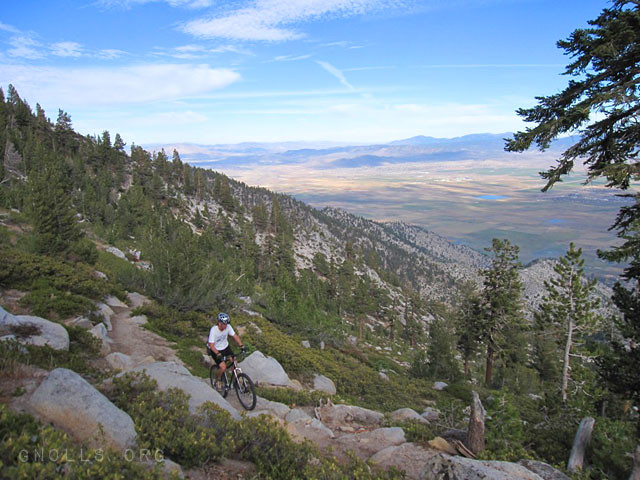(Note: This article has been revised, extended, and greatly improved as a result of an error caught by an alert commenter.)
Origins and evolution of the Western diet: health implications for the 21st century
Loren Cordain, S Boyd Eaton, Anthony Sebastian, Neil Mann, Staffan Lindeberg, Bruce A Watkins, James H O’Keefe and Janette Brand-Miller.
American Journal of Clinical Nutrition, Vol. 81, No. 2, 341-354, February 2005
This paper is basically all you need to know about why paleo diets work, and why they are the most healthy diet possible…
…with one exception. The authors make a giant mistake by regurgitating the “saturated fat is bad” dogma, even though their own data refutes it.
First example: in the subsection “Fatty domestic meats”, they claim that wild game is much leaner than feedlot cattle (this is true)—and then claim it is much lower in SFAs (saturated fatty acids), which is false according to their own data!
In Fig. 6, showing seasonal variation in caribou body fat, caribou at their leanest (in April) contain 9% saturated, 8% monounsaturated, and 2% polyunsaturated fats—a fat profile of 47% SFA, 42% MUFA, and 11% PUFA. At their fattest (in October), they contain 33% SFA, 29% MUFA, and 5% PUFA, or a fat profile of 49% SFA, 43% MUFA, and 8% PUFA.
Here are their claims:
“Because subcutaneous and abdominal body fat stores are depleted during most of the year in wild animals, PUFAs and MUFAs ordinarily constitute most of the total carcass fat (11). [False: half the carcass is SFA. 47%/53% and 49%/51% equal 1/2 within the precision of their data set.] MUFAs and PUFAs are the dominant fats in the edible carcass of caribou for all 12 mo of the year, as illustrated in Figure 6 (11, 60-65). [False again: as shown above, there is as much SFA as MUFA and PUFA combined.] Because of the seasonal cyclic depletion of SFAs and enrichment of PUFAs and MUFAs, [What seasonal depletion? 49% to 47% is insignificant, being well within the rounding error of the percentages they use in the table] a year-round dietary intake of high amounts of SFAs would have not been possible for preagricultural hominins preying on wild mammals. [False again! The table of fat content Cordain uses assumes that hunters selected an animal purely at random from the herd, which is nonsensical.]
In other words, every claim in this paragraph is factually false according to the authors’ own data!
Hunters Didn’t Choose Random Animals
My last statement clearly requires justification. Let’s look at hunting strategies used by actual Late Pleistocene caribou hunters, to whom Cordain presumably refers. (Hat tip to Peter at Hyperlipid for the reference.)
Subsistence strategies and economy in the Magdalenian of the Paris Basin.
In: R.N.E. Barton, A.J. Roberts and D.A. Roe, eds., The Late Glacial of Northwest Europe: Human Adaptation and Environmental Change at the End of the Pleistocene, pp. 63-71.
Council for British Archaeology Research Reports 77, London.
(alternate location, easier to read but in two parts: part 1, part 2)“The age distribution is dominated by prime adults, suggesting selection of individuals to be killed. At Le Flageolet although males are present, females appear to be more numerous, which is consistent with individual encounter hunting in the winter, due to their superior nutritional state after the rut.”
…
“[At Pincevent and Verberie,] The toothwear for the one and two year old individuals indicates that the kill took place during the autumn at both sites … The large size of the kill and the season point towards a hunt related to the autumn migration (at least at Verberie).”
…
“The primary use made of reindeer [note: reindeer = caribou] was, of course, nutritional. The autumn hunts indicated by the dental eruption sequences at Pincevent and Verberie would be designed to exploit the prey in its best condition of the entire year. The summer forage would have fattened up the herd to its maximum annual weight, and even more importantly, to its highest fat content. Both meat and marrow are important for the diets of reindeer hunters. Speth and Spielmann’s arguments (1983) about the desirability of fat in the diet are particularly pertinent for cold climate hunter/gatherers in the winter. The fat in marrow can supply twice as many calories per gram as protein can, and can allow efficient metabolism of the protein from meat. There are no whole bones in the faunal assemblages from Pincevent or Verberie. There are abundant impact fractures, systematically placed to open the medullary cavities for the extraction of marrow.” [Note: marrow is very high in fat.]
This behavior is shared by all other known hunting cultures:
Jack Brink, Northern Plains archeologist, from his masterwork “Imagining Head Smashed In”:
“Fat, not meat, was the food source most sought after by all Plains Aboriginal hunting cultures…”
“Assuming that bigger was better, he [George Carlin] aimed at a massive bull and suffered ridicule and laughter from the rest of his party ‘for having aimed at an old bull, whose flesh was not suitable for food.’“
“My people killed three bulls … which served for our dogs.”
So it is abundantly clear that not only were the healthiest and fattest animals selected by Paleolithic hunters—the hunters also orchestrated mass kills during the season they were fattest in regions where winter cold made meat preservation practical. Yet this behavior is not reflected in Figure 6, which assumes hunters selected randomly each time by using an average value.
Fortunately Figure 5 shows average fat concentrations for mature bulls, young bulls, and mature females. Using the figure of 25% bodyfat (from a mature bull in October) with the cubic regressions Cordain uses, taken from this figure in this paper, yields…
…90% of calories from fat, not 67% as listed in Fig. 6! So if we choose an animal of the healthiest of the three types in Fig. 5, as caribou hunters clearly did, we get the following percentages:
| Month | % calories from fat, Fig. 6 claimed |
% calories from fat, calculated from actual bodyfat in Fig. 5 and cubic regression |
|---|---|---|
| Jan* | 29% | 54% |
| Feb | 25% | 48% |
| Mar | 22% | 44% |
| Apr | 19% | 36% |
| May | 22% | 42% |
| Jun | 22% | 45% |
| Jul | 28% | 54% |
| Aug | 41% | 64% |
| Sep | 58% | 75% |
| Oct | 67% | 90% |
| Nov* | 55% | 66% |
| Dec* | 49% | 59% |
| Average | 36% | 56% |
(* Most likely animals eaten in these months were from October mass kills, so these percentages are conservative)
Finally, note that caribou hunters didn’t kill an average animal of each type, either: they selected the fattest…usually females who had not borne a fawn that year, a category not shown in the table. And this further assumes that they never threw away lean muscle meat, or gave it to their dogs, as Plains Indians were well-known to do. So these figures are most likely lower bounds of fat consumption.
Thus, we can easily see that fat provides the majority of calories for caribou hunters, even under pessimistic assumptions.
This argument is reinforced by the fact that humans can only metabolize a limited amount of protein each day…approximately 200-250 grams. But an active hunter burning 4000 calories per day, if eating only the claimed 36% of their calories from fat, would average 1260 calories a day of lean protein—or approximately 360 grams! This is nonsensical.
Finally, I note that caribou hunting is a recent adaptation: Homo sapiens didn’t reach Europe or East Asia at all until perhaps 40,000 years ago. Quoting the original paper again, “Larger mammals generally maintain greater body fat percentages by weight than do smaller animals.” Recall that preagricultural hominins preferentially hunted megafauna: mammoths, mastodons, giant ground sloths, giant tortoises, gomphotheres, chalicotheres, giant hartebeest, giant bison, woolly rhinoceri, and the myriad other megafaunal species that our ancestors drove extinct during the Quaternary period. Even modern American bison (let alone ancestral bison) are many times larger than caribou.
Such animals would have contained a much greater percentage of carcass fat, which would therefore have comprised a much greater percentage of the human diet. Taking caribou as typical representatives of the hunter-gatherer diet is somewhat disingenuous, as humans didn’t even reach the area where caribou lived until perhaps 40,000 years ago. (Compare this to our 2.6 million year history of butchering animal carcasses with stone tools, and the fact that meat-eating most likely dates from before our split with chimpanzees 6-7 million years ago.)
Is Modern Red Meat Higher In Saturated Fat? No.
Now let’s compare the fatty acid profile of…modern feedlot beef.
According to the USDA’s food information database, the fat profile of grain-fed beef is approximately 46% SFA, 50% MUFA, and 4% PUFA.* In other words, grain-fed beef has a slightly lower percentage of saturated fat than wild caribou—and we have disproven another of the authors’ key claims about saturated fat. (“Marbled meat results from excessive triacylglycerol accumulation in muscle interfascicular adipocytes. Such meat has a greatly increased SFA content…” [which we’ve just proven false])
In fact, based on Table 5 of this Cordain paper, the fat of wild game averages approximately 45% SFA (saturated fat).
Finally, the fact remains that hunter-gatherers ate all portions of the animal. Hunters did not trim their steaks—and they ate the fatty parts of the carcass, such as brains and visceral fat, that modern humans throw away! Therefore, the fact that modern muscle meat is fattier is balanced by the fact that we throw away much of the fat which Paleolithic humans consumed with relish.
The rest of the article is indeed correct, including their subsequent conclusions about the PUFA profiles (n-3 vs. n-6) of wild game vs. feedlot beef—but their conclusions about saturated fat are simply a regurgitation of disproved theories which are contradicted by their own data, as well as recently but clearly established science.
Therefore, though it is an excellent paper overall, we can safely discard all its conclusions relating to relative intake of saturated fats.
Live in freedom, live in beauty.
JS
(* I can’t link directly to results in the USDA online database, so I’m forced to link to pages at nutritiondata.self.com, which crawls it. And the composition varies slightly by cut and by individual animal, but is close to those values for the cuts I’ve looked at.)
For far more detail on the subject, you can read this comment.
Postscript: I don’t have time to list all the research showing that saturated fat is, in fact, good for you, because that’s another article by itself—but you can start here:
Am J Clin Nutr 91: 535-546, 2010. Meta-analysis of prospective cohort studies evaluating the association of saturated fat with cardiovascular disease. Patty W Siri-Tarino, Qi Sun, Frank B Hu and Ronald M Krauss
“A meta-analysis of prospective epidemiologic studies showed that there is no significant evidence for concluding that dietary saturated fat is associated with an increased risk of CHD or CVD.”
And here’s the formal refutation of The China Study, the last refuge of the “meat and fat is bad, eat grains and go vegetarian/vegan” dogma since Ancel Keys’ Seven Countries Study was conclusively refuted (most recently by the tremendously entertaining documentary Fat Head) as misleading trash science.
Finally, my purpose is not to trash Dr. Cordain: he’s done a great deal of good over the years, and “Origins and Evolution of the Western Diet” is a solid summary of the issues, one to which I’ve referred people many times. But that particular section (“Fatty domestic meats”) is simply wrong, and I hate to see people scared away from eating paleo because they can’t get game meats or grass-fed beef at their local supermarket—or because they’re still afraid of saturated fat.
(Did you like this article? Click here for more articles tagged “data != conclusions”, or here for more articles tagged “paleo”.)











